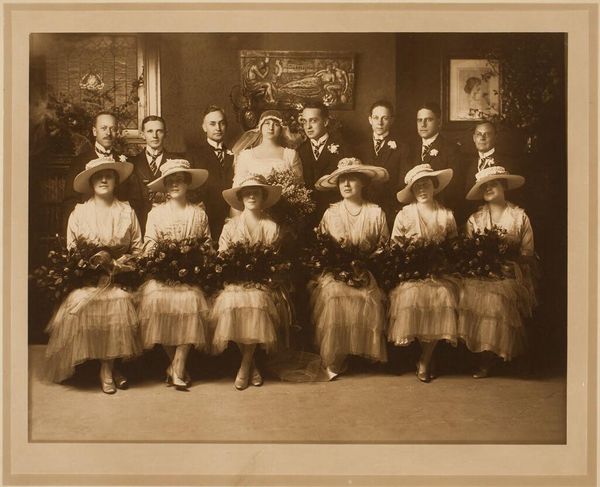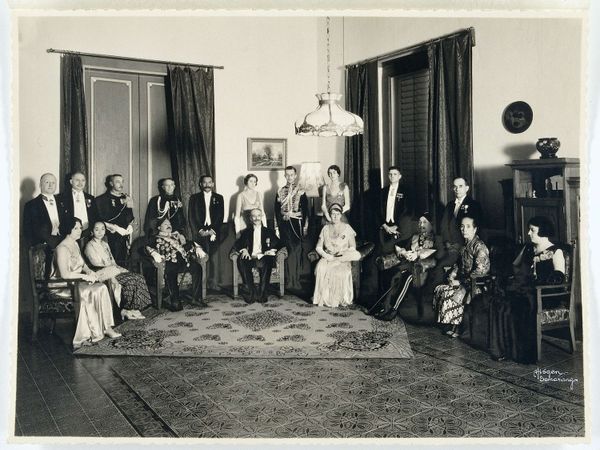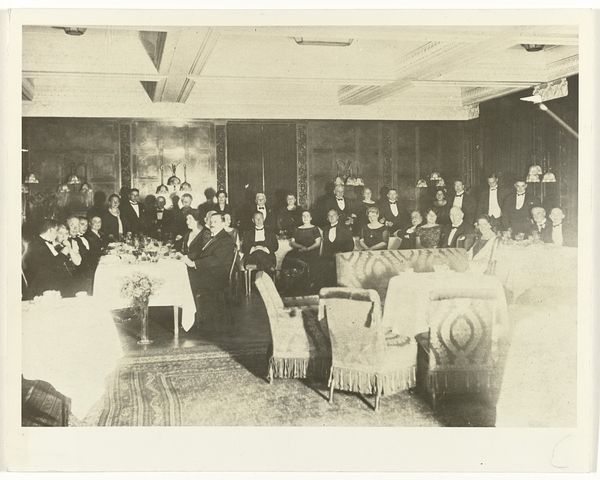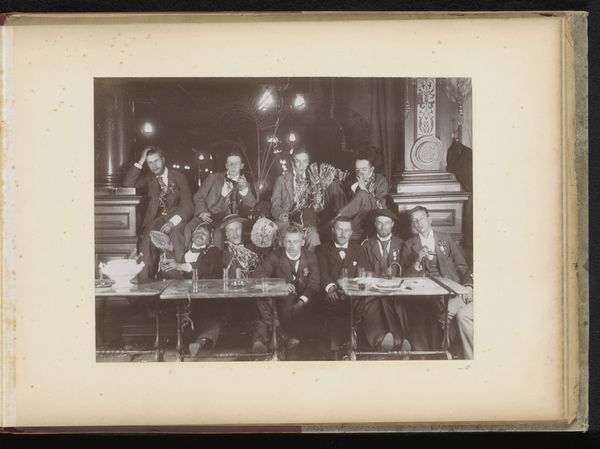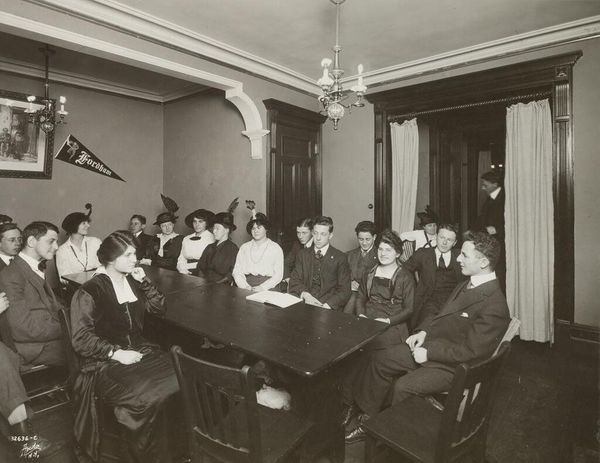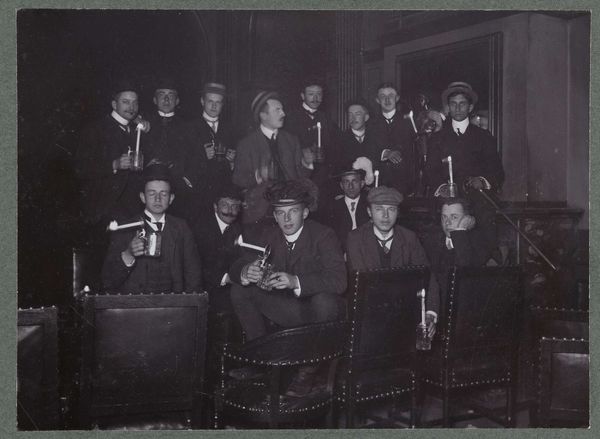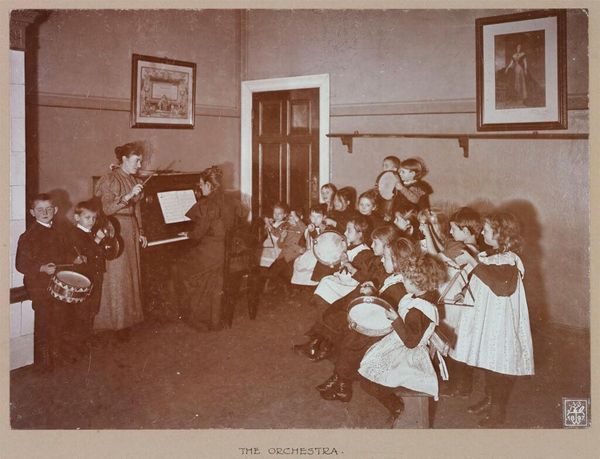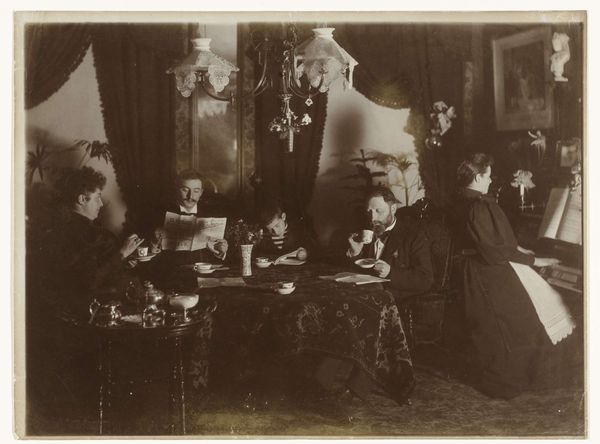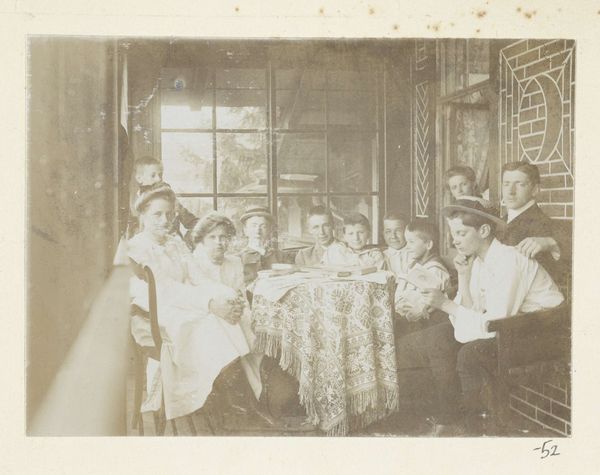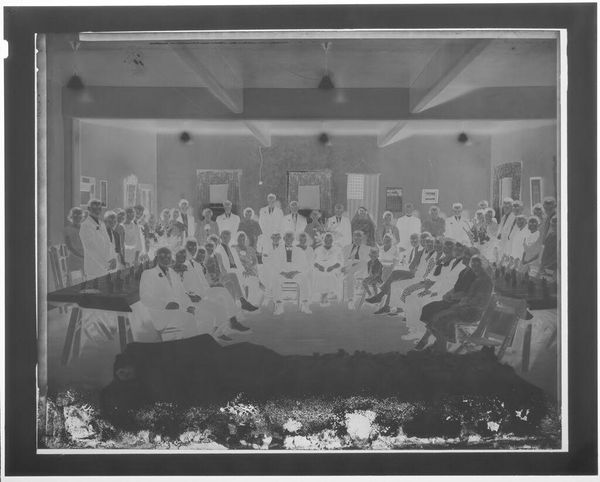
photography, gelatin-silver-print
#
african-art
#
wedding photograph
#
photo restoration
#
wedding photography
#
harlem-renaissance
#
archive photography
#
photography
#
historical photography
#
wedding around the world
#
old-timey
#
group-portraits
#
cultural celebration
#
gelatin-silver-print
#
19th century
#
celebration photography
#
realism
Dimensions: image/sheet: 20.3 x 25.5 cm (8 x 10 1/16 in.)
Copyright: National Gallery of Art: CC0 1.0
Editor: Here we have James Van Der Zee's "Dress Rehearsal #2," created in 1934, a gelatin silver print. It feels almost theatrical, with the painted backdrop. What story do you think it's telling, viewed through a materialist lens? Curator: I’m drawn to the constructed nature of this photograph, both literally and figuratively. Van Der Zee was known for his commercial portrait studio. Notice the backdrop; it's a stage set. This wasn't documentary photography capturing a real event, but a constructed representation. Editor: So, it's about more than just documenting a moment. What’s important about that "staging?" Curator: Precisely. Consider the materials used: gelatin silver. The very choice of photography itself – a relatively accessible medium at the time – allowed for the wider dissemination of these images, offering a means for the Black community to represent themselves, controlling the means of production and challenging mainstream depictions. The staging gave the community a voice. The photographic materials, set design elements and the studio location must all be seen as conscious construction of visual identity. Editor: That makes sense. So the act of constructing this image becomes a statement in itself? Curator: Exactly! The labor involved, from the photographer to the subjects carefully posing and curating their appearance, highlights a desire for self-definition and agency. It wasn't just about taking a picture, it was about actively shaping a narrative, challenging the limited roles often afforded to African Americans in the 1930s. Editor: So, by focusing on the materials and the making of the photo, we can understand its cultural impact more deeply? Curator: Precisely. By analyzing the photograph through its production we move away from traditional art history views and towards an engagement with the picture's social life. Editor: That’s given me so much to think about! It’s not just the ‘what’ but the ‘how’ and ‘why’ of its creation. Thanks for opening my eyes.
Comments
No comments
Be the first to comment and join the conversation on the ultimate creative platform.


